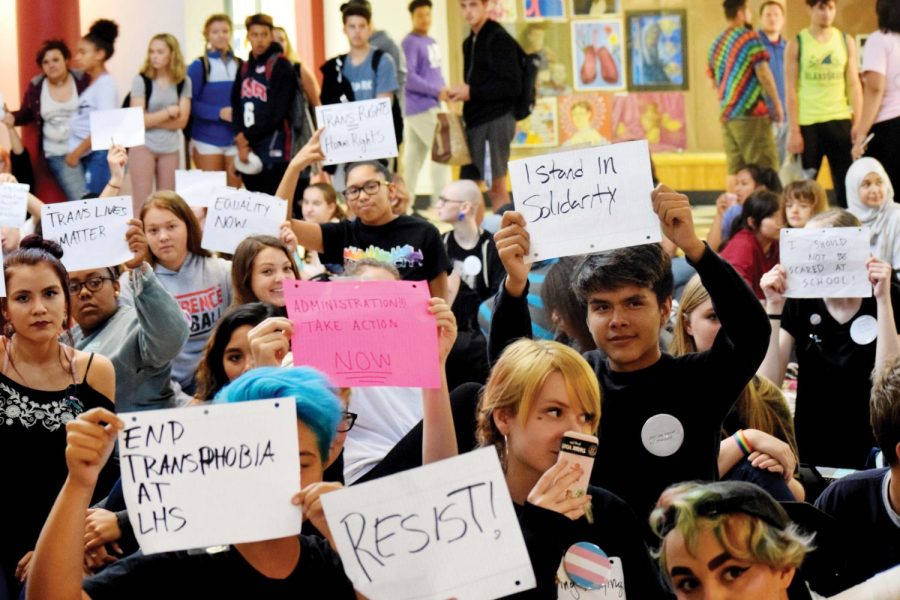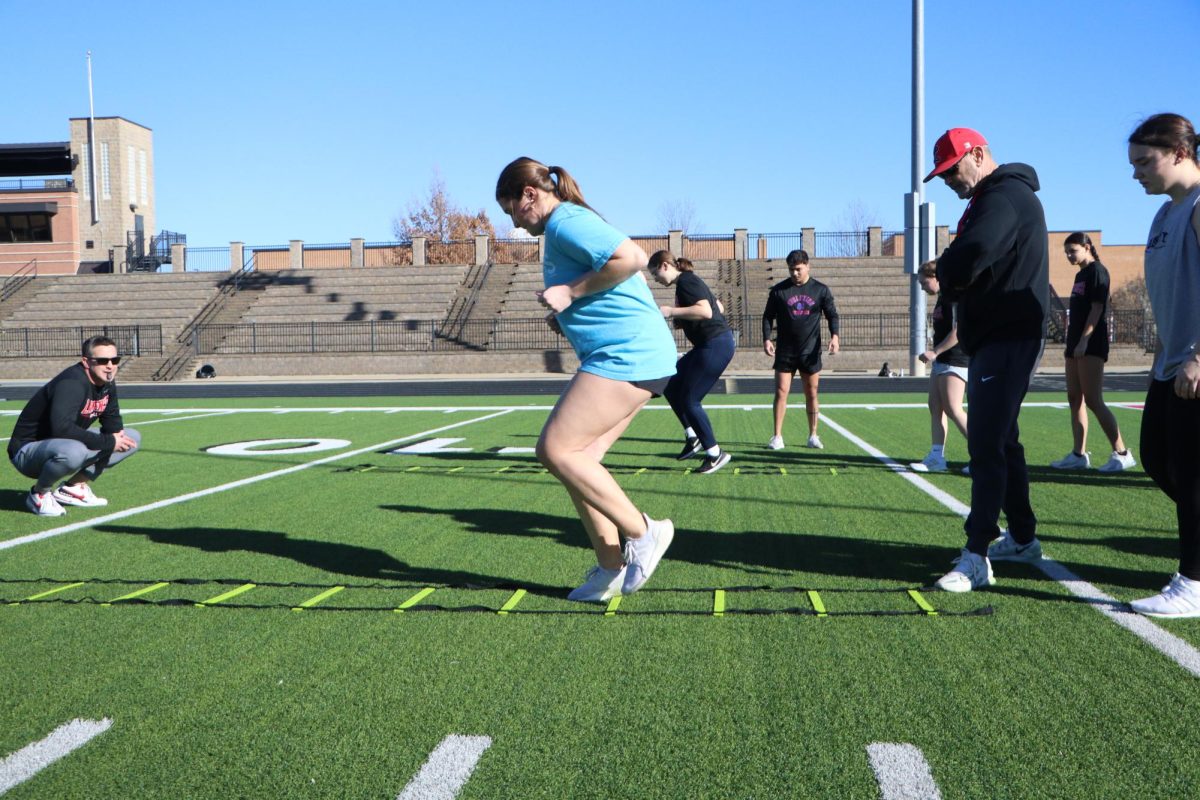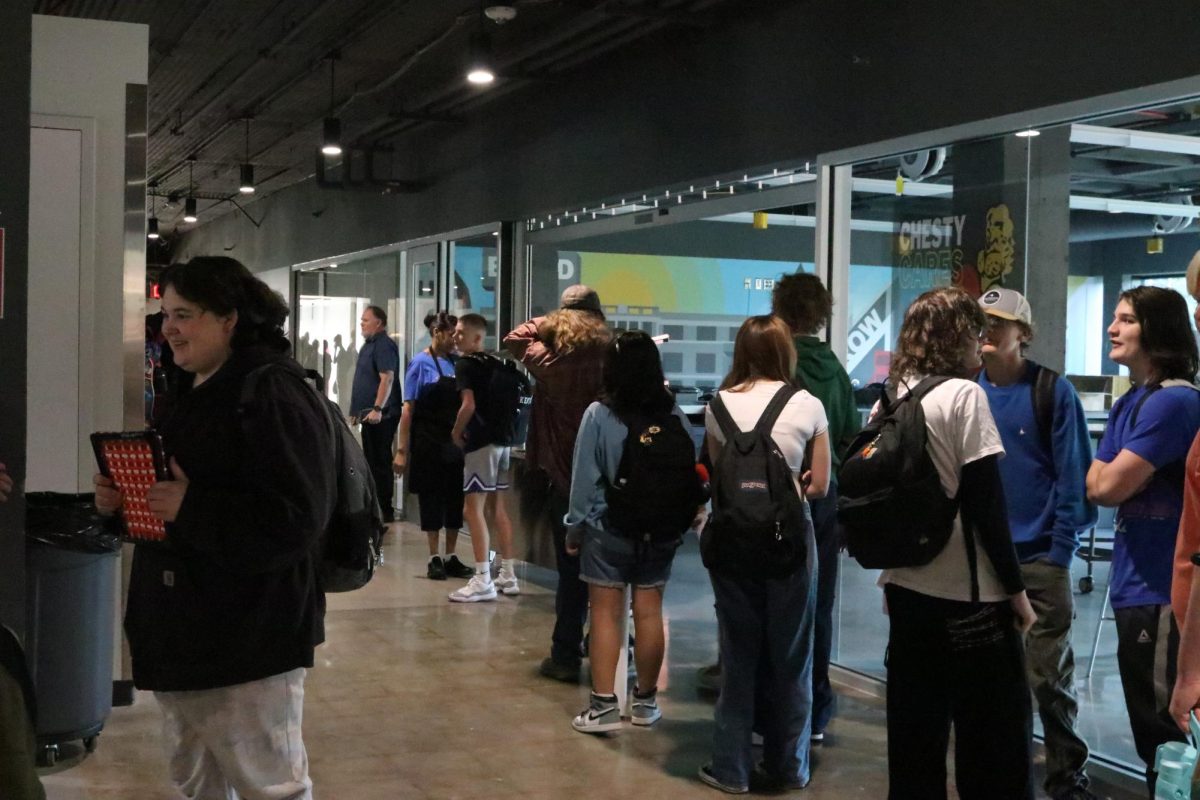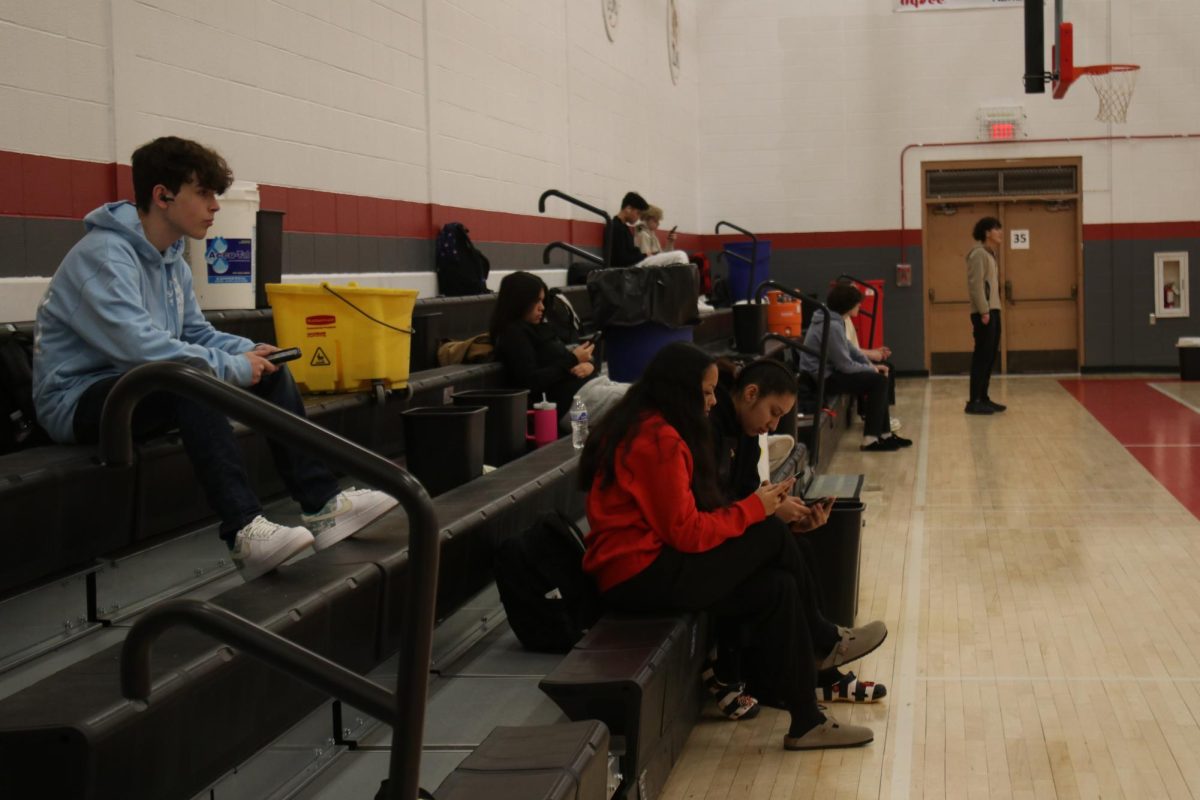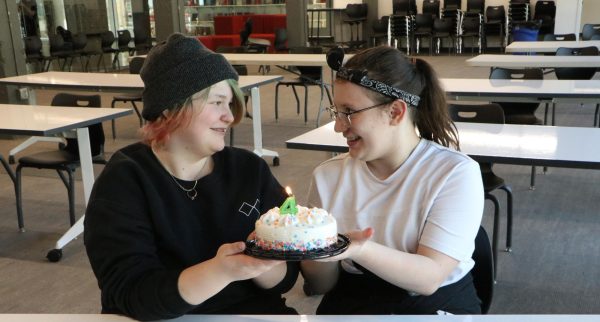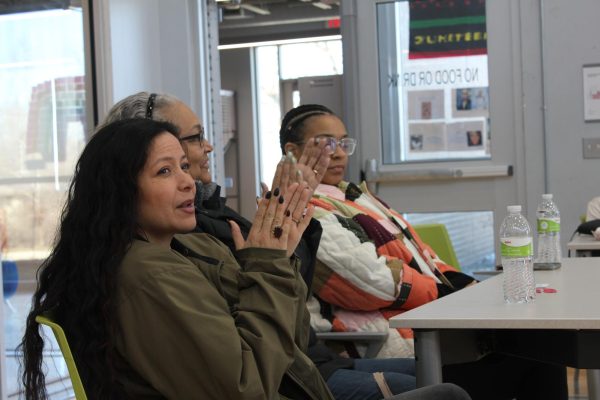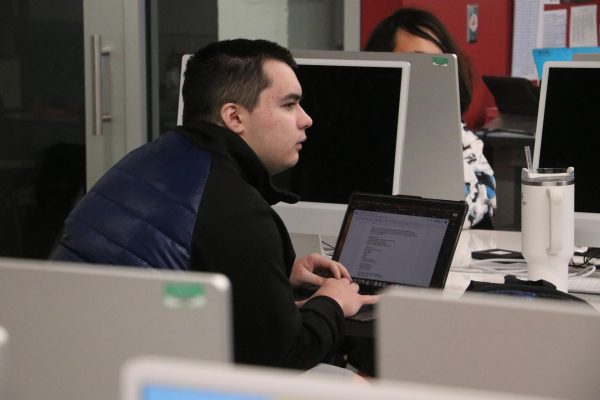Schools Struggle With Free Speech
Demanding change — Students take part in a sit-in in the rotunda to support transgender students. The sit-in began during second hour on Sept. 18 and continued throughout the school day.
October 19, 2017
When Lawrence High School students protested against transphobia last month, they joined the ranks of students who for decades across the nation have tested how the First Amendment is applied in school.
The most famous case is that of Mary Beth Tinker, who was a middle schooler when she peacefully protested the Vietnam War by wearing a black armband with a peace sign on it during the school day. Tinker was suspended and her family sued the school district. After the local and state courts ruled in favor of the school district, the Supreme Court heard her case and ruled in favor of her First Amendment rights, noting that the protest did not cause a substantial disruption to the school day.
The question of disruption has been key in other court cases in which the court ruled schools could choose to limit the free speech of students.
“From a technical, legal standpoint, free speech ends where it causes a substantial disruption at school,” assistant principal Mark Preut said. “Was it [the sit-in] disruptive? It disrupted the flow around the school, it created lots of chatter, but it wasn’t like other students weren’t able to go to class and have class during the sit-in.”
Assistant principal Mike Norris said the law can be confusing and administrators generally look first to board policy. While court cases can provide some guidance, unless those cases were decided by the Supreme Court, Norris noted that judges from different regions have reached different conclusions.
“We also have the luxury of having an attorney that works at the school district and people at the district office, and there are times where we’re like, ‘Wow, this is a big one,’ ” Norris said. “We confer [with the attorney] because now we need specific advice.”
When it comes to cyberbullying or off-campus speech — such as the statements that led to the protest — the right actions become even less clear, even for those who study the issue.
“This is an area that’s in pretty serious flux,” Student Press Law Center legal consultant Mike Hiestand said. “There’s a grayness. There’s a lot of discrepancies between the core ideas [and] just trying to figure out where the line actually exists.”
Often, administrators can only address what happens during school.
“It is very difficult for them to make a reach of what happens outside the school,” said G.A. Buie, executive director of United School Administrators of Kansas. “When it trickles back into school, though, you can make some connections.”
With personalized devices, how much reach administrators have becomes even more of a concern.
“The reality is, no policy or procedure has been made about what kids can and cannot do on their computers,” Norris said of the one-to-one devices given to students this year.
When conflict does occur — online or in real life — administrators find it difficult to decide what they should do next. They can take different stances on disciplinary action, because, often, the law doesn’t specify how they should react to controversial issues.
“Some people are going to the land on [one] side and say, ‘If there’s bullying behavior, there has to be quick and swift consequences,’ ” Buie said. “And you’re going to find other people who are going to say that if you have bully behavior, the best way to handle it is through strong education and learning opportunities.
“And I don’t know that there’s a perfect answer,” Buie continued. “Sometimes you can educate, educate, educate, and eventually you have to consequence. And sometimes, the bully is so bad, that you immediately have to have consequences because of the situation that it creates.”
Schools can easily regulate offensive speech on campus, but public schools can find themselves in a difficult situation when trying to regulate off-campus speech that is offensive, noted Frank LoMonte, who is head of the Joseph L. Brechner Center for Freedom of Information at the University of Florida.
“We don’t want the government to get into the business of deciding what’s offensive,” LoMonte said.
Preut believes education remains the most effective method for addressing offensive speech.
“Discipline ought to always be, as much as possible, about educating,” Preut said.
Deemed a “million dollar question” by Buie, administrators have to ask themselves how they can balance making sure school functions properly and making sure kids feel safe, especially in this relatively new era of online communication.
“People are braver behind a computer screen than they are in person, so that creates a lot of challenges for administrators,” he said. “What they have to do is they have to try to find that fine line between focusing on what’s most important in school, which is educating kids, and managing a safe, orderly, and enjoyable environment for kids to be in.”
Norris argues you can’t have one without the other.
“If you don’t feel safe, I don’t believe you can learn,” Norris said.



